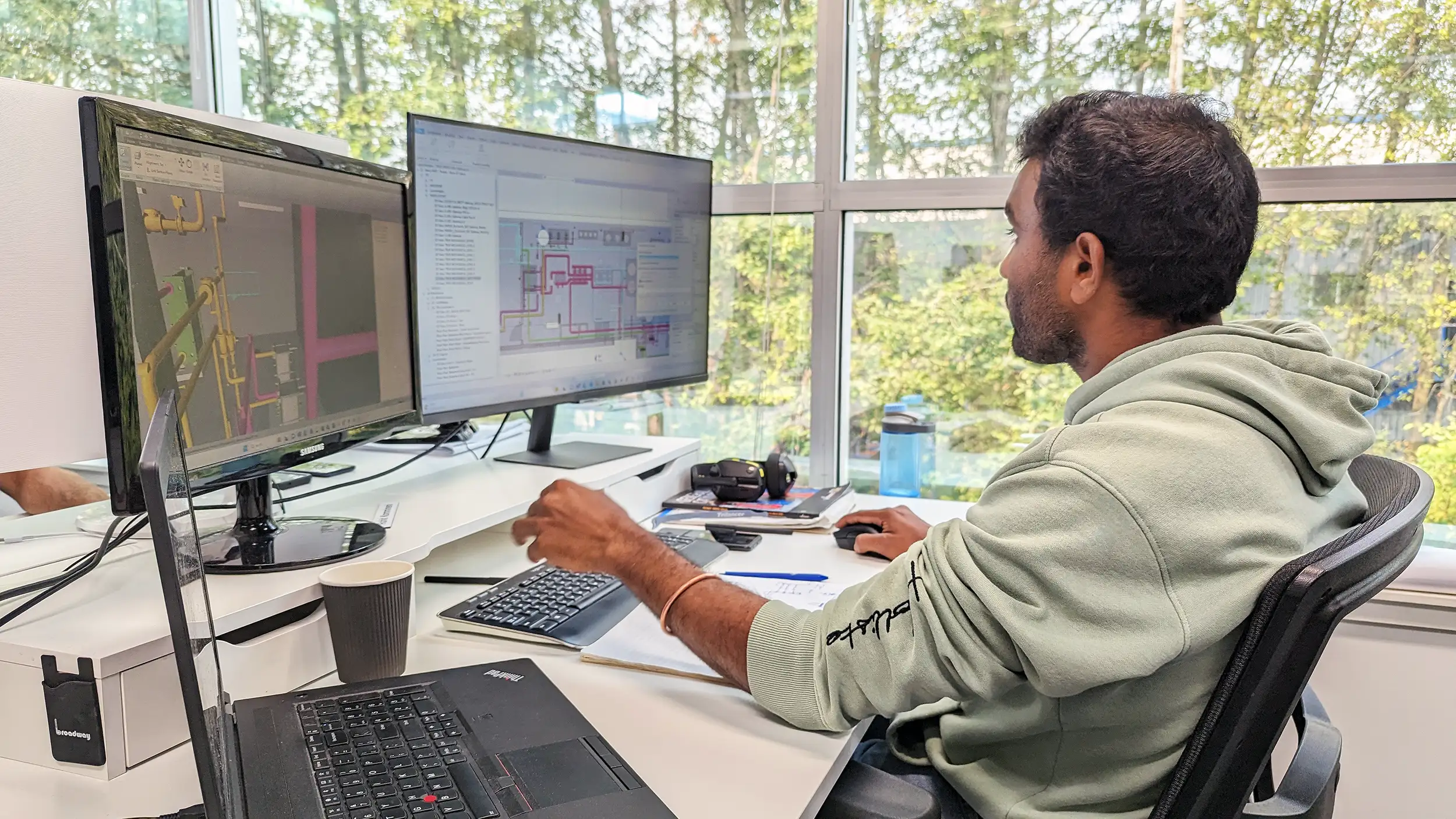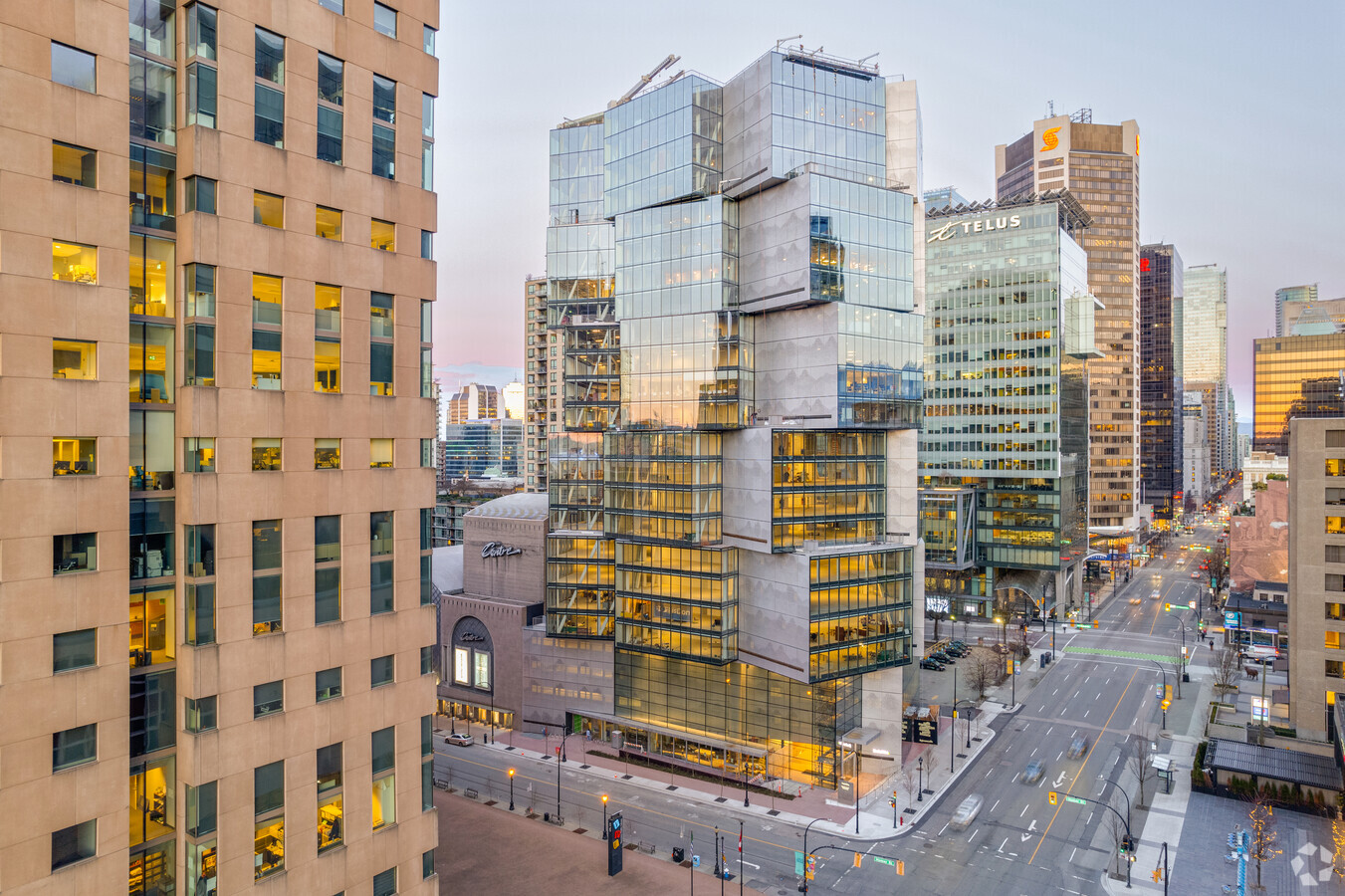Revolutionizing Mechanical Contracting: Technological Advances in VDC, BIM, and Prefabrication.
Over the past decade, the commercial mechanical contracting industry has witnessed remarkable technological advancements, particularly in Virtual Design and Construction (VDC), Building Information Modeling (BIM), and prefabrication. These innovations have transformed how mechanical contractors design, fabricate, and install HVAC-R, heating, cooling, and plumbing systems in high-rise construction projects.
The Rise of VDC and BIM.
VDC is a project management framework developed in 2001 at the Center for Integrated Facility Engineering (CIFE) at Stanford University. Alexandre Almeida Del Savio posits that the main barrier to innovation in the construction industry lies in industry fragmentation. More specifically, inefficient exchange of information which results in poor collaboration and integration between construction partners. He, and many other seniors in the industry, believe that VDC is the antidote to those barriers to innovation.

Virtual Design and Construction (VDC) and Building Information Modeling (BIM) have become essential tools in the construction industry. These technologies allow contractors to create detailed 3D models of building systems, facilitating better planning and coordination. VDC aims to improve construction projects’ planning, design, construction and operation through combined management via objectives, collaboration methods, production management and digital technologies. VDC is also a framework that motivates research and development strategies to improve reliability, productivity, innovation and sustainability in construction.
BIM enables the integration of all building components into a single, cohesive model. Mechanical contractors can visualize HVAC-R, heating, cooling, and plumbing systems within the context of the entire building. This holistic view helps identify potential clashes with other building elements early in the design phase, reducing the risk of costly rework.
VDC takes BIM a step further by incorporating the entire construction process into the digital model. This includes planning, scheduling, cost estimation, and logistics. By simulating the construction process, contractors can optimize workflows, streamline material usage, and ensure that the project stays on schedule and within budget.

Prefabrication: A Game Changer
Prefabrication has revolutionized the way mechanical systems are built and installed. By manufacturing components in a controlled, off-site environment, contractors can ensure higher quality and consistency. Prefabrication also allows for parallel processing of construction tasks, significantly reducing on-site labor and installation time.

In the context of high-rise construction, prefabrication offers numerous benefits. Mechanical systems for HVAC-R, heating, cooling, and plumbing can be pre-assembled into modules, which are then transported to the site and quickly installed. This modular approach minimizes disruptions on-site and allows for faster project completion.
Benefits of Technological Advancements
These technological advancements in VDC, BIM, and prefabrication are yielding significant benefits for mechanical contractors:
- Enhanced Collaboration: VDC and BIM facilitate better communication among all stakeholders, including architects, engineers, and contractors. This collaborative approach ensures that everyone is on the same page, reducing misunderstandings and improving project outcomes.
- Cost Savings: By optimizing material usage and reducing on-site labor, these technologies help lower overall project costs. Early clash detection through BIM reduces the likelihood of expensive changes during construction. Prefabrication allows for bulk purchasing of materials, leading to additional cost savings.
- Time Savings: The ability to prefabricate mechanical systems off-site and quickly assemble them on-site significantly shortens the construction timeline. VDC allows for detailed scheduling and planning, ensuring that each phase of the project proceeds smoothly.
- Higher Quality: Manufacturing components in a controlled environment results in higher quality and more reliable systems. Prefabrication reduces the risk of human error and ensures consistent standards.
- Sustainability: Optimized workflows and reduced material waste contribute to more sustainable construction practices. Precise planning through BIM allows for the integration of energy-efficient systems, further enhancing the building’s sustainability.
“Investing in VDC has been a game-changer. VDC enables us to streamline project planning and execution, reducing errors and increasing efficiency. This investment is not just in technology but in delivering exceptional value and precision to our clients.” — Lee Zirk
Conclusion.
The technological advances in VDC, BIM, and prefabrication over the past decade have revolutionized the mechanical contracting industry. These innovations have enabled contractors to design, fabricate, and install HVAC-R, heating, cooling, and plumbing systems with unprecedented accuracy, efficiency, and quality. As the construction industry continues to evolve, mechanical contractors who embrace these technologies will be well-positioned to deliver superior solutions for high-rise construction projects.









